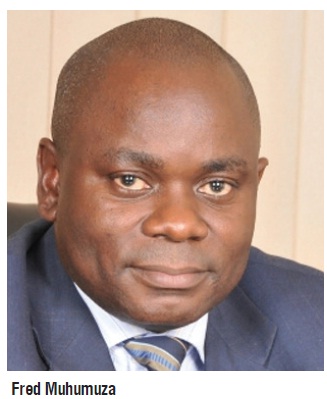Agriculture versus industry
Martin Kyeyune, the economic and finance advisor of Roofings Group, the largest producers of steel in Uganda, says if the government’s plan to tap into the manufacturing sector to provide jobs is to work, the government needs to support industries that are already in operation to start producing at full capacity. He says some industries around Kampala are operating at about 55% of installed capacity.
Kyeyune wants the ‘Buy-local-Build Uganda’ campaign promoted urgently if manufacturing locally without a market does not make sense.
“When you manufacture goods and they struggle to get a market locally, you can’t create more jobs because no one is making money out of manufacturing,” he says.
He mentions other bottlenecks; including the high cost of capital and unreliable, poor distribution, and costly energy. He says although the government has done well in improving the generation side by building power dams like Bujagali, Karuma and Isimba, the distribution and transmission need to be improved.
“We cannot continue having power surges which constantly affect machinery. That makes manufacturing costly,” he says.
Kyeyune advocates a deliberate strategy from the government to attract industries that have both backward and forward linkages in the agriculture sector. He says that would create more jobs than any other sector. To lower cost of production, he says completing the Standard Gauge Railway is very critical.
He says comparatively, Ugandan manufacturers spend about US cents 8-10 per tonne/kilometre. In comparison, he says manufacturers in China and Egypt spend as low as US 5 cents per tonne/kilometre.
Astrid Haas, the Country Economist for South Sudan and Uganda at the London School of Economics and Political Science’s International Growth Centre has also weighed up Uganda’s chances of breaking into the middle income bracket in just five years.
Writing in The Huffington Post recently, Haas said in order to achieve faster growth and development; Uganda must move workers from agriculture into manufacturing.
“The medium term challenge is to accelerate the pace of moving workers from jobs in agriculture and the informal sector into modern industries.”
Haas said Uganda’s rapid economic growth in the last two decades has been largely helped by external factors; debt relief, high commodity prices, ample donor funds, and relative low borrowing costs.

Haas’ views resonate with Muhumuza who says the structure of the economy would have to change from the current state where more than 70% of the population is squeezed in agriculture which contributes only about 20% of GDP. Unless there is structural change, Muhumuza says, “Even if the economy grows, it will be through stock assets like roads and railways and sectors that exclude majority of the people.”
Muhumuza says if Ugandans remain excluded from the formal economy by limited access to land, skills, high value inputs, and finance, the productivity of both people and assets will be so low that the trajectory to middle income status will not be reached.
According to the 2014 national population report, close to 70% of homesteads are still engaged in subsistence agriculture—the same number that was reported 26 years ago.
But other economists, like Makerere University Business School Professor, Lawrence Bategeka, who is the incoming MP for Hoima Municipality, the government could, in fact spur rapid growth in the economy, if it focuses on agricultural produce for export.
Comparing Uganda and Vietnam— both coffee producers— Bategeka says by 1990, when Vietnam was producing and selling about one million bags of coffee, Uganda was selling about three million bags of coffee.
But thanks to Vietnam’s rapid deployment of technology on the farm, the Southeast Asian nation now produces about 30 million bags.
“That is more money than Uganda is going to earn from oil,” he says. Unfortunately, Uganda remains stuck at 3.5 million bags of coffee for export. To achieve the Vietnam-style transformation, Bategeka says, Ugandan attitudes to work must also change.
“Our demographics may not be favourable as 60% of the population is children and therefore they don’t work,” he said, “but we need to focus more on production and the population needs to engage in meaningful production.
“Uganda still has big patches of arable land and so the government should engage the rural population by identifying a few export crops.
“Even then, there is need to re-organize farmers to ensure that they benefit from the whole value chain within the agricultural sector.”
Bategeka says the most pressing challenges as the economy expands, lie in the energy sector, roads, and transforming the agriculture sector.
“We are on the right track but more needs to be done. We already have a liberalised economy and a well-established private sector; we now need to tap into the energies of individuals and firms,” he told The Independent.
 The Independent Uganda: You get the Truth we Pay the Price
The Independent Uganda: You get the Truth we Pay the Price




Uganda should put 30% of its resource in creating strategic competence and abilities to counter stiff competition ahead, of course people being the most product and important resource uganda has we should therefore invest in them first, I mean creating knowledge that we propel the country to manufacturing nations league and that is posible, with good and knowlegable society.